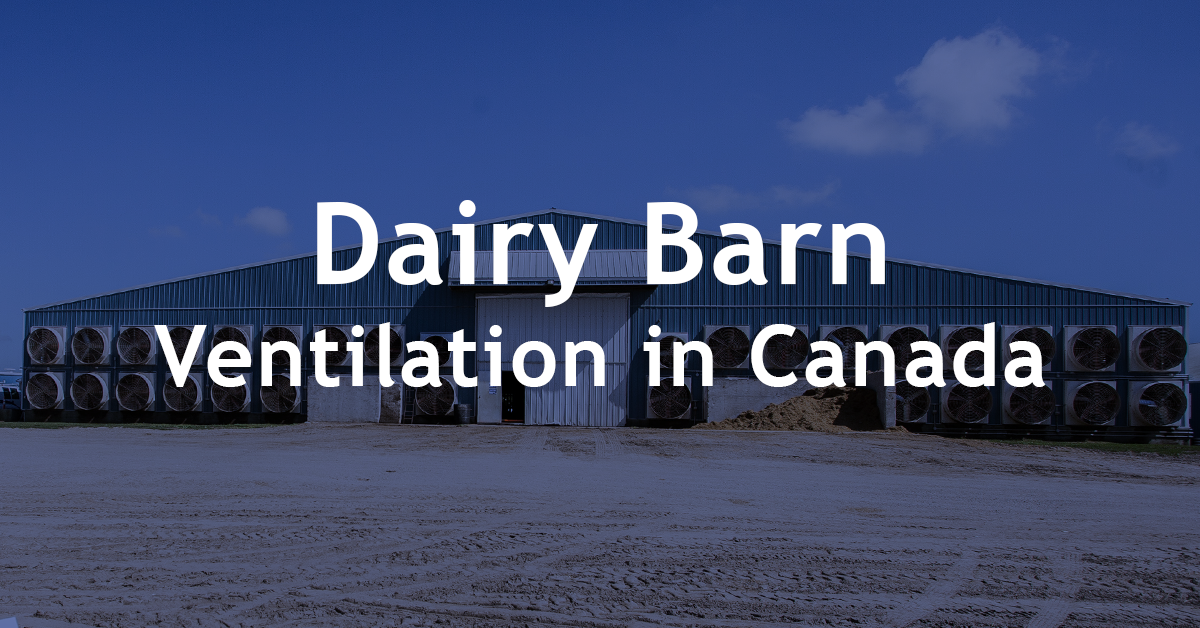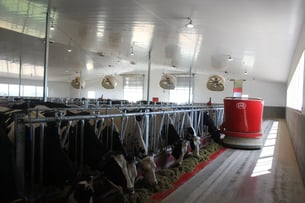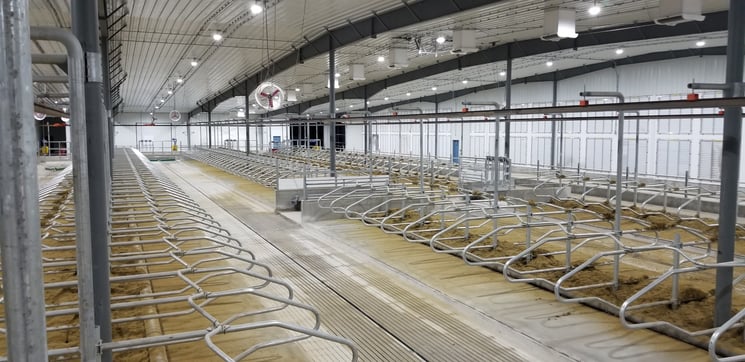
What does a typical ventilation set up look like in a free stall dairy barn? An easy question to ask, but a slightly more difficult one to answer. While Canadian geography has its’ differences, the theme across the country is the same – moving air to provide a better environment for your cows, and your employees. If you do not have sufficient air flowing in and out in a timely manner, then cow comfort, nutrition, and milking method is almost a moot point. When we take the varying climates into account, a better question to ask is ‘What does a typical free stall dairy barn setup look like in each province?’

We sat down with dairy experts (Bruce Derksen, Manitoba; Chris Sundby, Saskatchewan; David Numan, Alberta; Fred Meyerink, British Columbia) for a discussion about the differences.
Starting with the most common ventilation system by province, we heard loud and clear that British Columbia relies on natural ventilation for most barns as the climate is much milder than the other parts of the country. The natural ventilation allows for a significant savings in building a barn, but does not mean you should forego fans, curtains and the like. While Alberta experiences much harsher winters than BC, they too rely on natural ventilation in the central part of the province, whereas the southern area tends to favour cross ventilation. Then, the prairies – the harshest of climates for dairy barns in Canada. Temperatures in Saskatchewan and Manitoba experience a swing from -30C to +30C, and beyond once you factor in windchills and humidity. Tunnel ventilation is the norm in these provinces, apart from central Saskatchewan, which like Alberta, relies on Natural Ventilation.
So,we have natural, cross and tunnel ventilation. Each provides significant benefits, but also faces their own challenges. Most of these challenges can be remedied by ensuring you have enough air movement in the barn. In the summer, aiming for an air exchange of at least once a minute is ideal. Using stir fans and curtains in a naturally ventilated barn will help mix your air (be cautious it’s not just pushing your air). A cross ventilated barn will need to lean on baffles to push air down to the cows, as the fans push outside air across the barn. And then there’s tunnel ventilation – having enough fans (that are large enough), as well as actuated inlets to allow for a full tunnel system or opening the top for a vented format will allow you more control than relying on overhead doors.

When the colder months approach across the prairies, you can dial down the air exchanges to every couple minutes, finding the delicate balance between reducing/removing condensation to minimize fog, but not introducing too much cold air that your equipment is susceptible to freezing. A contributing factor to freezing that is commonly overlooked, is the number of animals in each space. If you are typically milking 200 cows, but only have 160 in the dead of winter, you will need to adjust your heating accordingly. At that number, you are down 20% of your natural heating elements, and must make up for it with supplemental heat sources. In British Columbia, however, the concern over the winter months is keeping on top of the moisture the rain introduces. Ensuring a dry, warm barn keeps the pneumonia away and the employees comfortable.

While many of these considerations are applicable to both robotic and parlour milking barns, there are special considerations to take on both sides.
When milking with robots in colder climates, ensure you have sufficient heat around the robot (enclosed room are not always necessary). If you’re milking via parlour, there are certain design aspects like holding areas, branches, offshoots and ‘dungeon style’ rooms that require additional ventilation. When we look at large holding areas and return alleys, stir/push fans and curtains will need to be added to prevent flies or stagnant air. When we look to the actual parlour area, misters can be added here not only to keep the cows cool, but to keep the employees cool. Be mindful of intermittent scheduling for this, as you do not want anyone (cows or humans!) getting a chill in the winter months.
A common thought in all provinces during the height of summer is to avoid misting systems in most barns. Not only do you have to decrease your air movement, which encourages flies, they tend to encourage crowding below the misting, which increases heat stress. In severe cases, misting can encourage pneumonia as well. However, it has its’ place. Strategic placement over the feed bunk is about the only recommended place for misters, and at that it’s recommended to run them for 1 minute on / 5 minutes off.
As you can see, there are not a vast amount of differences. The common goal is to ensure you have sufficient air exchanges in both winter and summer, the only difference really, is how that looks. When you really simplify the differences, it can be summed up in ventilation styles – natural vs tunnel. Now, calf barns are another story, but that’s also a story for another issue.
For More Inforaton on dairy ventilation customizaed to your barn contact us for an evaluation.
United Agri in BC ||| Western Ag Systems in SK ||| Penner Farm Services in AB, MB and ON.

Like this story? Subscribe to our blog to get updates on new articles in your inbox.





